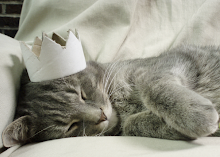People misunderstand what causes problems in the hands. It is not the repetition of hitting the computer or piano keys. If you do it right, you can play the piano or type 12 hours a day for the next 50 years and never have a problem. It is the not-releasing between playing each note or typing each character that causes hand problems.
When we keep up the tension between notes/characters, it damages the hands. There are two related aspects to this.
1. In learning the cello, I was encouraged to have quiet hands, meaning to not move the fingers around so much but hold the tension on the strings so as little changes as possible were necessary. I do the opposite, release and move as much as possible. Which leads into the second aspect.
2. People play or type too hard. I can sometimes see and feel the whole table move when others type near me. Not only are they not releasing, but they are hitting the keyboard too hard.
Now, I have a very quiet touch, and on the keyboard, a quiet sound (not quiet fingers). Yet I have a very deep sound and can be very loud easily. Why?
Before I answer, I will make a shocking confession, when I play the cello, much of the time I do not touch the strings to the fingerboard. Yet I have a loud and full sound unlike m cellist you (don't) hear in ensembles. If this doesn't shock you, pick up a string instrument and play a string while pressing it halfway to the neck board. How do I do it? For this same reason, I can play loudly with ease on the piano.
The small finger muscles in the hand are not for the power of playing. They are there to guide and direct the large muscles of the arms and chest which should do the heavy work. The fingers are there to choose the keys to play. The fingers move to the note so that the larger muscles can transfer their pressure through them. The great Chilean pianist, Claudio Arrau, cautions against there being any stiffness along the path of your body, arms, hands, fingers.
Arrau studied with Martin Krauss, a favorite pupil of Frans List. Wow! And taking this into consideration, I still need to disagree a bit. It's best to keep a firmness in all the muscles so that the work of the big muscles is transferred through the fingers. Otherwise, the body and large muscles are just positioning the hands and letting them do the work.
When I studied piano from a student of a student of Claudio Arrau, I was taught that Arrau used the Italian method as opposed to the Russian method. I haven't confirmed how these methods work, but the important thing is the concept behind Arrau's playing. A pianist is supposed to, slightly, with your entire body, always lean into the piano. Your hands and fingers keep you from falling into it at, let's say, 45 degree angle. When I move my hands away while keeping the 'tension' of playing the piano, I actually fall forward into the piano. The effort in playing is not to press the notes, but to lift them. This is subtle though.
You will get a beautiful tone this way. And interestingly, the quieter you play on the piano, the more pressure and work comes from the finger muscles.
I like Arrau's playing, though it was not always, critics tell us, on the level with the supreme top performers. Yet, when the 2 hour movie was made of the Great Pianists of the 20th Century, which pianist did they end with? Horowitz? Gould? Hoffman? Schnabel? Richter? No, Arrau!
I find I can even watch some of his videos with the sound turned off. Beautiful. He was described as playing the piano with velvet paws. His performance here, at the end of video, The Art of the Piano, is so touching. Please enjoy.
Arrau's performance only
on Arrau
Subscribe to:
Post Comments (Atom)






No comments:
Post a Comment